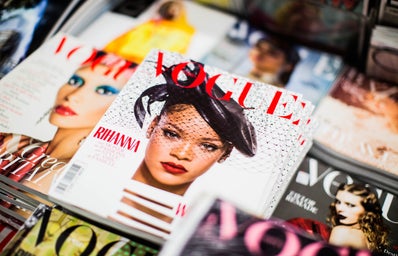For so long, Vogue Magazine has been a dictator for American culture, a symbol for the pinnacle of fashion and beauty. Perhaps it’s because these are qualities that we associate the elitist with, something that Vogue and its editor in chief Anna Wintour have certainly proven themselves to be.
But what has been our culture’s definition of the elite? It’s always been anyone rich, white and thin. It’s people who can cruise through a New York office building not feeling out of place in the world and what culture defines as “in style.”
That’s the problem that some people have with Vogue. Vogue has proven to influence culture, yes, but in what way? For most of its life raised by Wintour, Vogue has influenced culture by further perpetuating and bolstering different aspects of it. Wintour takes what she thinks people want and magnifies it in a creatively revolutionary approach. I will give Anna Wintour that. As a creative, she’s done some revolutionary work for Vogue. But most of her art is only revolutionary in its style, never in its message. At least not for audiences who are not rich, white, and thin.
That is, until recently. Like all companies, Wintour was one of the many faces of Condé Nast (Vogue’s parent company) who, after the amplification of the Black Lives Matter movement earlier this year, seemed to finally vocalize and acknowledge the hostile and racist behavior that she and many other white Vogue employees have been responsible for.
I’ve already written many articles about this: about rich white people in charge who take advantage of people of color employees, then somehow create a toxic work culture that not only encourages this behavior but create a sort of language that people of color believe that they have to speak as well to navigate a white-washed world.
But what’s different about Vogue and Anna Wintour is that it seems like in some ways, their attempts in the past couple of years to include diverse voices (especially in leadership positions) has been either very good or very bad. A couple of weeks ago a New York Times piece titled, “The White Issue: Has Anna Wintour’s Diversity Push Come Too Late?”
The piece detailed the many instances in which Wintour and the leaders of fashion have either failed or succeeded in integrating diversity. Some Wintour and Vogue accounts from BIPOC employees have seemed optimistic, while others have seemed deeply negative.
Lindsey Peoples-Wagner, a Black woman and the editor of Teen Vogue since 2018, says that Ms. Wintour is responsible for many of the opportunities that Wagner has received. Wagner is personally one of my inspirations, creating and cultivating inclusivity with these opportunities that she’s received, giving other BIPOC artists and influencers a platform with the power that she has been given. On the other hand, Elaine Welteroth, a Black woman, was given editor-in-chief of Teen Vogue in 2016, which was monumental for the editorial industry. But Welteroth’s experience was not what it would have looked like if a white person was given her position. She was given an ambiguous title and was asked to split leadership.
After reading through the New York Times piece, I came to the conclusion that Anna Wintour, Vogue, and Condé Nast had, for the most part, failed in their efforts (or lack thereof) of promoting diversity.
The internal apology that Wintour issued also seemed to be received differently as well. Many saw it as insincere, a performative decision that would settle the masses and make her look like she was actually intent on change. Others saw it as uncomfortable yet candid.
Even if there are tiny diamonds in the rough when it comes to diversity from Wintour’s end, it’s evident that, for the most part, she’s made many BIPOC employees uncomfortable and has time and time again maintained and fostered Eurocentric perceptions of beauty.
The New York Times article cited that out of 18 Vogue employees, 11 thought Wintour should not be in charge any longer. And that is just 11 more than the number of people that should have felt safe and uncomfortable in Vogue offices.
It’s hard to say whether Wintour’s efforts are genuine or merely just the tokenization of women of color, especially Black women. With this few BIPOC in positions of power over the years at Vogue, I know that white people’s definition of “effort” when it comes to diversity is not enough.


